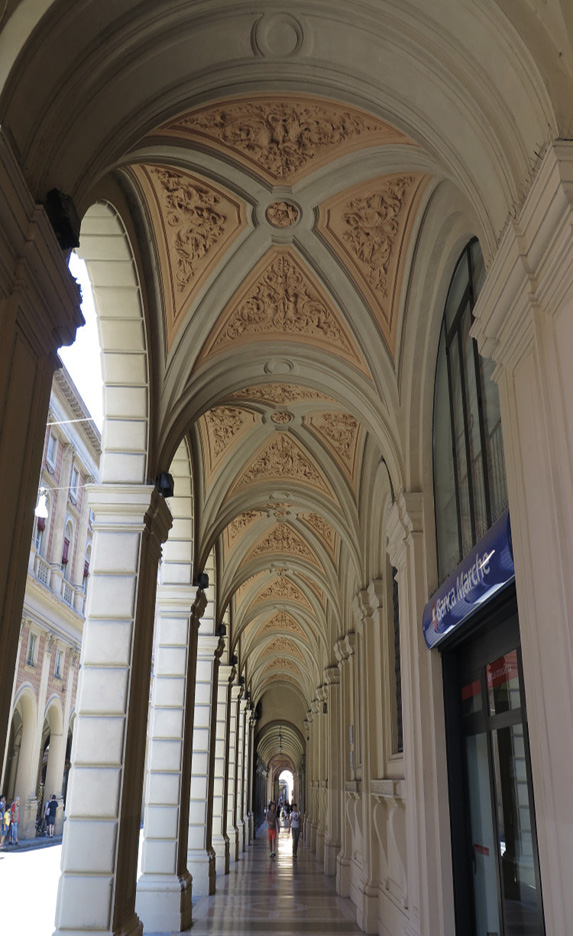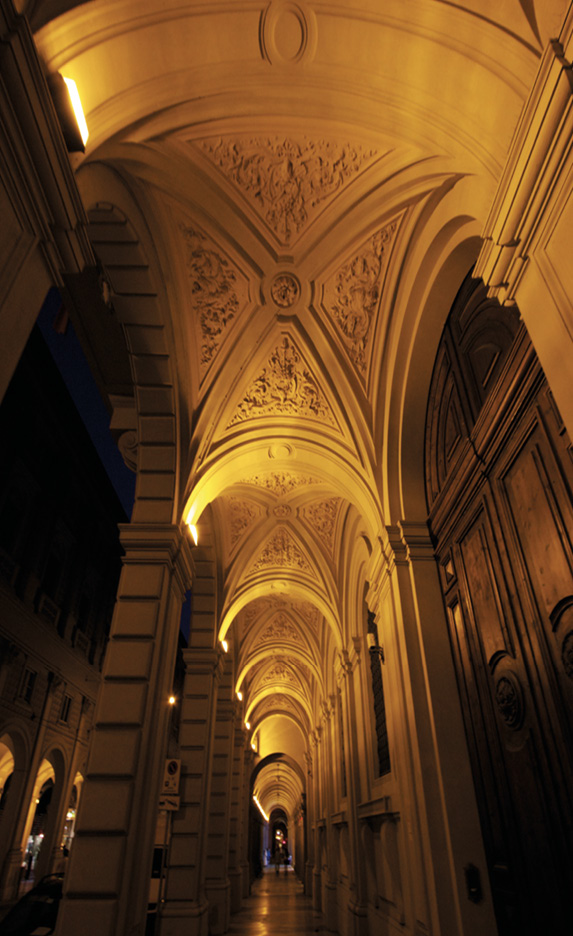The origins of Legnani-Pizzardi Palace date back to 1366 when Giovanni da Legnano of Lombardy, a distinguished jurist and scholar of European renown, took over the area between present-day Via Luigi Carlo Farini and Via Massimo D’Azeglio to acquire a school for law readers from the Bologna Studio. After the death of the patriarch Giovanni, Antonio Maria Legnani, appointed Senator in 1506, combined the traditional vocation of studies with a successful financial activity as a banker that increased the family’s wealth and extended the property to include the houses facing the entire block. At the end of the 1500s, the Legnani entrusted the construction of a senatorial palace to Francesco Morandi, known as the Terribilia, and continued by the Bolognese architect Francesco Guerra, who designed an imposing isolated building, not in line with others and lacking porticoes, in order to create a perspective of greater architectural prestige to the new dwelling.

The internal and horizontal organization of the palace faithfully reflects the dividing element of the common spaces, in an initial parallel succession of two side-by-side courtyards of honour of equal sophistication. The columns are topped by sandstone capitals rich with allegorical figures, and the passage through the loggia of the two courtyards leads to the other courtyards, which have been transformed into a splendid garden. In 1676, an important architectural solution intervened to give breathing space and connection between the parts of the palace when the Bolognese Gabriele Chellini was entrusted with the construction of an imposing and striking Baroque-style staircase decorated with niches and statues to connect the main floor, but also opened to the inner courtyards and loggias. In the second half of the eighteenth century, the palace was enriched with sculptural statues depicting two centaurs, the Young Centaur (smiling) and the Old Centaur (weeping), placed inside the courtyards on tall pedestals by Petronio Tadolini of Bologna. Together with his brother Francesco, the architect who designed the niche that contains it, Petronio also signed the other imposing work placed at the end of the garden, but perspective to the palace entrance on the then entrance from Via San Mamolo not yet Via d’Azeglio, the gigantic almost four-meter statue depicting Hercules, flanked by two river gods in terracotta. 
On August 30, 1805, Girolamo Legnani Ferri died without male descendants. The palace remained in the family’s ownership until 1839, when the last heirs of the collateral branch of the Malvezzi sold it to Marquis Camillo Pizzardi, who in turn bequeathed it to his nephew Luigi, son of his brother Gaetano. Luigi Pizzardi was the first mayor of Bologna from April 1860 to September 1861, a Senator of the Kingdom and President of the Banca Popolare. In 1868, under the direction of architect Antonio Zannoni, the palace was renovated in perfect consonance with the rigour of the sixteenth-century façade facing it, but the side most affected by the urban transformation was the one on Via Farini, where the architectural element of the portico was introduced to give linearity to the building in relation to the requirements of the widening of the street and the consequent setback of some parts. Luigi Pizzardi died on September 3, 1871. On June 30, 1885, heir Cesare Pizzardi sold the building to the Italian Company of Southern Railroads, later the Ferrovie dello Stato (State Railroads), which used it as its headquarters. The palace gradually lost its original nature as an aristocratic residence, taking on the characteristics of a place dedicated to work and offices. On Via Farini, on the ground floor under the porch, the commercial agency, open to the public, is also in operation for a time. Sold by the State Railways, Palazzo Legnani-Pizzardi in the mid-1980s underwent extensive renovation and currently houses the Tribunal di Bologna (Bologna Court of Law).





.png)